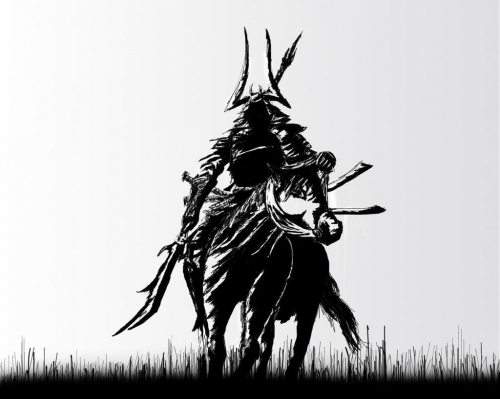
The Four Warrior Practices for Achieving: Anytime, Anywhere
Angel Millar
Ex: http://peopleofshambhala.com
We’re all human. So why can some face down even the most terrifying situations, overcoming overwhelming odds, and achieving what so many others others might believe impossible?
Reading the classical commentaries on the martial arts, listening to contemporary masters, and hearing how contemporary elite military units tackle situations, tells us that there are less than a handful of truly essential elements of accomplishment. And they are available to everyone, to be applied in everyday situations, even where there is no conflict as such. Here they are:
1. Set Realistically High Goals:
“A good martial artist,” said Bruce Lee, “puts his mind on one thing at a time.” The famed martial artist was reminding his student, Joe Hyams, of an important principle. “The secret of kime [tightening the mind], is to exclude all extraneous thoughts,” Lee told Hyams (as the latter describes it in his book Zen In the Martial Arts), “thoughts that are not concerned with achieving your immediate goal.”
In Insanely Simple: The One Obsession that Drives Apple’s Success, Ken Segall notes that Apple — the company that gave us the Mac, iMac, iPod, iPad, and other history-making devices — focussed, excluding all kinds of good ideas, to concentrate on one. The point was to see the idea through, and to create something truly great out of it. Apple didn’t try to do everything at once. But by pushing the boundaries of one idea at a time, Apple created new, and — just as importantly — extremely simple to use devices.
By aiming high (but realistically so), Apple created things that have changed how we interact and think about technology.

Visualizing the arrow hitting the target: master archer Awa Kenzo (left); samurai Miyamoto (center) and sumi-e circle by Yamada Mumon Roshi.
It’s a principle that Apple could have learned from martial arts training (whether of an ancient military elite, contemporary practitioners of Tai Chi, or something else). Faced with some grueling, repetitive exercise — e.g., more push-ups than you think you can do — then the set can be broken up. Instead of aiming for, say, 100, which you think you cannot do, aim for the realistically high number of 10, and then keep doing that until you can reach a hundred.
Aiming realistically high creates focus. It also encourages the individual — or group or company for that matter — to realize that they can do more than they thought. Indeed, it means doing something better than expected. With successes stacking up, you can aim realistically higher still.
2. Visualization:
When we’re facing a challenging situation, visualization may be one of the ways we begin to get to grips with it. In some situations. Mostly, people live in dread, fear, or inflate their egos to cope with stress and set backs. It’s unhealthy.
Visualization isn’t imagination per se. It’s focussed thinking; a bit like meditation. Artists and designers, given a specific project, will visualize — even if they don’t think of it in such terms. They have a strong idea of where they’re going, and how they’re going to get there, before they start.
“Every block of stone has a statue inside it and it is the task of the sculptor to discover it,” remarked Michaelangelo. What did he mean. In effect, Michaelangelo was saying that he visualized the statue in the stone. Not, however, as something imposed on it, but as something that was integral to it. The sculptor had to work with the natural fabric — the strengths and weaknesses — of each block.
Visualization has been part of humanity since the beginning. One theory suggests that tool making and speech emerged at the same time, not because the tools were difficult to make and required discussion, but because these activities use the same part of the brain. In both cases, we need to know what we want, either to make or to say. The primitive tool maker had to know what his tool was going to look like. Less complex, for sure, like Michaelangelo with his sculpture, the tool maker had to discover the axe head in the intact flint stone. And to get it out he had to work with the material.
Yes, in art and design, things change along the way. New insights and better ideas come up, often as a result of an “accident” occurring in the process. (Most discoveries were made by accident.) But then the designer will visualize to comprehend what exactly they want to do with that.
Facing a more stressful situation, visualization helps us to understand the situation we’re walking into, so that we don’t panic once we’re in it. If it’s a verbal or physical confrontation (such as in contact sports), then we’re going to be better equipped to deal with it in an efficient and responsible manner. We’ve thought about how we might respond to certain possibilities. That makes the whole thing a little less scary.
To sum up, visualization helps us know what we want, and to work with what we have, whether that is the tools for design or our own skill (or limitations) and the the behavior of an opponent in martial arts.
3. Breathing:
You’ve heard someone say it: “take a deep breath and relax.” In the West, where we don’t focus very much on our breathing (unless we have problem with our lungs), it sounds almost like folk wisdom. What’s taking a deep breath going to do? Well, it turns out, probably quite a bit.
Tai Chi, Kung-fu, Karate, and many other martial arts systems place significant emphasis on breathing. Breathing with the movements (such as strikes with the hands or feet), injects them with maximum force, yet helps to prevent the martial artist hyperventilating, losing concentration, and becoming fatigued.
Within Systema, a Russian martial arts system, breathing is perhaps the major component. Systema is a modern martial arts, and, as such, it was designed for those of us around today. So things haven’t changed very much.
Yet, Systema uses the breath not only for fighting, or self-defense, but also — like some older martial arts — for de-stressing and healing the body. For example, the practitioner might, on waking and still laying in bed, breathe, imagining the breath traveling through his body, as he tenses and relaxes is it as a kind of wave going down the body.
In more traditional martial arts, such as Kung-fu and Karate, the practitioner will often meditate on the breath entering into the belly (more specifically the tan tien, just below the navel), to store and build up energy (chi) there.
The use of breath and movement is not limited to the martial arts.
In traditional ink painting (sumi-e), the painter moves the brush while breathing out. At a minimum, it helps the artist control his hand.
Martial artists, such as the famed samurai and ronin Miyamoto Musashi, also practiced painting, as well as other arts. Not surprisingly, since the brush and sword were considered one, and the principles of each art applicable to the other arts.
An exercise for painters, who are also adherents of Zen Buddhism, is to paint a circle in ink with one motion and in one breath. It’s harder than it looks. Most of time, looking at these circles, one sees a kind of wobble in the circle, and, frequently, they are misshapen. Something happened to the consciousness at such a point. Concentration was lost. The breath wasn’t consistent.
In summing up, deep breathing steadies the nerves and helps us retain control and composure in challenging and even frightening situations. It keeps us level headed.
4. Self-talk:
Self-talk is the motivational talk that we can use when things are tough — really tough.
Hopefully we’re in a situation where we’ve aimed realistically high, have visualized the goal, and are breathing deep, clearly, and consistent with our actions. But self-talk is the talk that propels us along when we could easily — and are more than tempted to — give up. It’s telling yourself that you can make it to the end of the race (even though feel like hell). Or that you can do those push-ups. Or that you can make whatever project not only work but really stand out.
Because of the stress of the situation in which we use this kind of talk, we tend to use short, pithy phrases. Nike’s memorable tag line — “Just Do It” — is really the kind of thing that athletes tell themselves when they’re pushing themselves hard.
Self-talk isn’t delusion or egocentrism. It’s not about saying: I’m the greatest. It’s about reaching deep into yourself for that one extra push when you most need it. It’s about giving your all.
We all face challenging situations. But think about these four principles — aiming realistically high, visualization, deep breathing, and self-talk — and, as they come up, you’ll be able to cope with, and come out on top of, those situations a lot more easily.

Angel Millar is an author, blogger, and the editor of People of Shambhala.
 In 1814, at the end of the Napoleonic wars, Benjamin Constant wrote with relief: “We have arrived at the age of commerce, the age that must necessarily replace that of war, as the age of war necessarily had to precede it.” Naïve Benjamin! He took up the very widespread idea of indefinite progress supporting the advent of peace between men and nations.
In 1814, at the end of the Napoleonic wars, Benjamin Constant wrote with relief: “We have arrived at the age of commerce, the age that must necessarily replace that of war, as the age of war necessarily had to precede it.” Naïve Benjamin! He took up the very widespread idea of indefinite progress supporting the advent of peace between men and nations.






 del.icio.us
del.icio.us
 Digg
Digg
